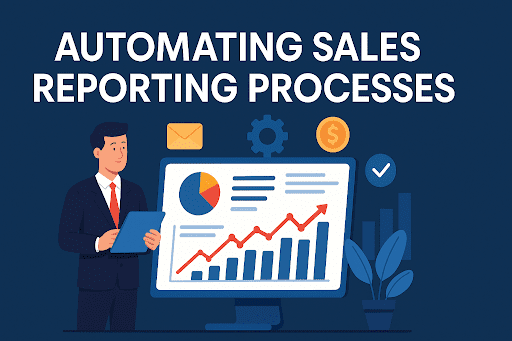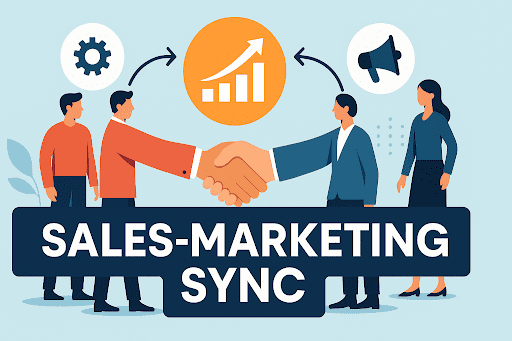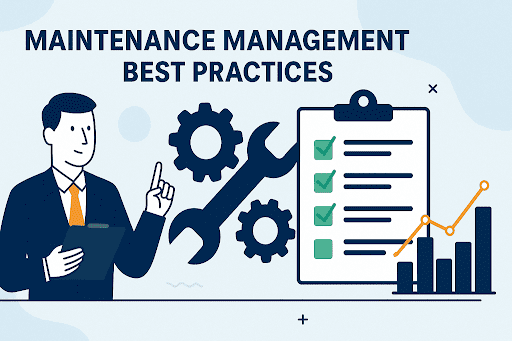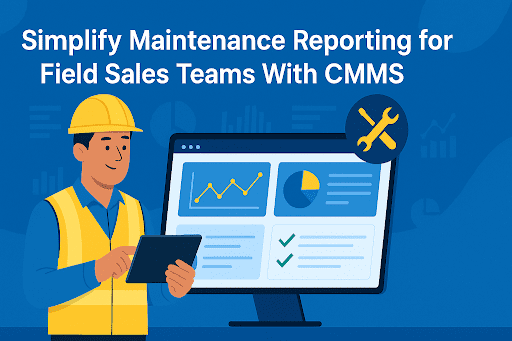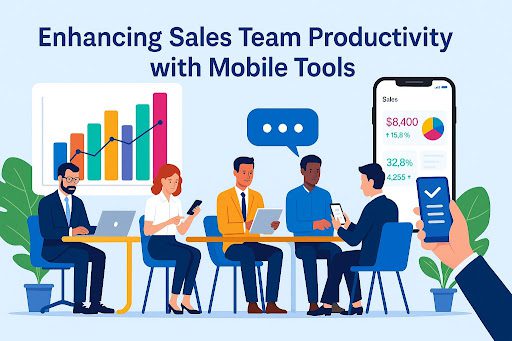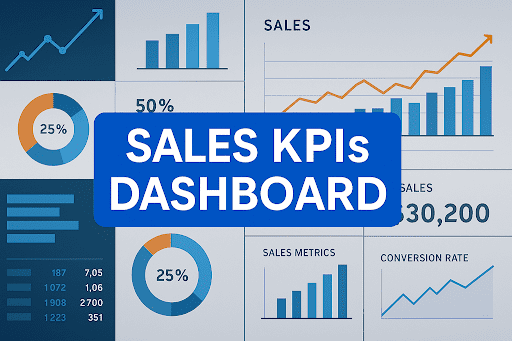 BACK TO Blog
BACK TO Blog
Asset Rental Management
Field Sales
Executive Overview Sales environments are changing rapidly. Decision makers now prioritize tools that reduce inefficiencies, simplify reporting, and provide clear insights into team performance. Voice sales tools are built for this shift. These tools allow sales professionals to manage conversations while systems document the details automatically. With integrated transcription and
- June 30, 2025
- DreamzCMMS Team
- 9 minutes read

- June 30, 2025
- DreamzCMMS Team
- 9 minutes read
Executive Overview
Sales environments are changing rapidly. Decision makers now prioritize tools that reduce inefficiencies, simplify reporting, and provide clear insights into team performance. Voice sales tools are built for this shift.
These tools allow sales professionals to manage conversations while systems document the details automatically. With integrated transcription and smart prompts, key information is retained without extra effort. Teams benefit from better records, faster CRM updates, and fewer errors.
For leaders, the value is direct: more accurate forecasting, less manual input, and a consistent view of every deal’s progress. With minimal disruption to current systems, these tools complement core platforms and workflows already in place.
Business Impact
| Function | Without Voice Tools | With Voice Sales Tools |
| Lead Capture | Entered manually post-call | Voice-based lead capture solutions process details automatically |
| Note Taking | Typed summaries post-meeting | AI voice assistants for sales reps log data in real time |
| Performance Review | Based on self-reported input | Voice analytics for sales performance deliver measurable insight |
| Tool Integration | Requires manual syncing | Voice-to-CRM integration tools align activity with live records |
Strategic Advantages
- Improves visibility across active deals
- Reduces delays in data collection
- Provides consistent activity records across teams
- Enables clean, real-time updates inside platforms such as Field Sales Software
What Drives the Shift Toward Voice Sales Tools
Sales organizations are adapting to changing demands. Manual methods often slow things down and lead to incomplete records. Leadership teams now expect accurate data, faster execution, and seamless integration with the tools already in place. Voice sales tools align with those expectations.
Better Records, Less Effort
Information shared during calls needs to be captured fully and stored correctly. That rarely happens when the process depends on memory or rushed typing. With the use of voice-enabled tools for sales teams, each conversation is logged as it happens. Notes are no longer delayed or forgotten.
More Time for Core Selling
Reps perform best when they spend their time on client engagement not on typing follow-ups or logging basic updates. Tools such as AI voice assistants for sales reps support this by recording conversations and placing key data where it belongs. This saves time without changing how teams work.
Smoother Communication Between Teams
Inconsistent handovers can create confusion. When teams share clients or accounts, everyone needs access to the same details. Voice-to-CRM integration tools make this possible. They update records automatically so that each team member stays informed.
Stronger Visibility for Leadership
Understanding what happens in real-time calls helps managers improve coaching and planning. Voice analytics for sales performance offer this level of insight. Patterns become visible, and decisions are based on actual activity rather than assumptions.
When paired with tools like Work Order Management Software and Field Service Management Software, the information extends beyond the sales team. It supports service coordination, delivery, and other downstream tasks.
For Decision Makers
Investing in voice solutions leads to better results without major disruption. Teams keep using familiar workflows, but with less effort and fewer errors. Data becomes cleaner, and time is used more effectively. Voice sales tools fit well into systems that value clarity and speed.
Looking to Reduce Manual Work and Improve Sales Clarity?Sales leaders are turning to automation not just for speed, but for accuracy and insight. Tools like voice-to-CRM integration and AI voice assistants for sales reps are helping teams move faster with fewer errors and better data.If your current process still relies on manual notes and follow-ups, there is a better way. Explore a Free Demo and see how a voice-driven approach can simplify how your team captures calls, updates records, and reports progress all without adding new systems or steps. |
Operational Benefits in Practice
Sales workflows depend on clear communication and reliable records. When these two are out of sync, tasks slow down and opportunities slip. Voice sales tools help eliminate those gaps. By quietly managing documentation in the background, these tools give teams more time and cleaner data.
First, routine call work becomes lighter. Manual note-taking fades because AI voice assistants for sales reps capture the conversation in real time and store it where everyone can find it.
Second, new leads move faster through the funnel. A rep can speak with a prospect and, thanks to a voice-based lead capture solution, see a complete opportunity record appear in the CRM before the next call starts.
Third, coaching gains substance. With voice analytics for sales performance, managers review real examples instead of relying on memory or self-reported summaries. Patterns good and bad stand out quickly.
Other teams benefit as well. A hand-off from sales to service no longer depends on scattered emails. Voice-to-CRM integration tools ensure that every note travels with the account, so downstream groups using platforms such as Facility Management Software or Field Sales Software start with full context.
Early adopters report three measurable gains:
- Less time spent on data entry and follow-up tasks.
- Fewer missed commitments because details are never lost.
- Sharper forecasts built on objective call data instead of estimates.
Taken together, these improvements free up hours each week and turn raw conversation into reliable insight without forcing people to change the way they talk to customers.
How to Introduce Voice Tools Without Disruption
Voice tools work best when they are placed into the existing structure of your sales operation not forced on top of it. Teams respond better when the rollout solves a real issue and fits into their daily rhythm. For leaders, the task is not about adopting a new trend. It is about making useful changes that reduce waste and improve visibility.
Clarify the Purpose
Start by naming the outcome you expect. If your team loses time updating records, then a system that captures conversations should reduce that problem. If your forecast data feels vague, then accurate transcripts might offer stronger support. When goals are set early, the tools chosen like an AI voice assistant for sales reps will have a clearer role and better impact.
Introduce in Small Steps
Widespread change is rarely effective without proof. Instead of shifting the full team at once, pick a few accounts and a small group of users. Let them test how the voice system fits into daily calls. Observe how the data appears in the CRM. Feedback from that group will help fine-tune the setup before anything else rolls out.
Keep Systems Aligned
Good technology does not require teams to learn everything from scratch. It adds value to the work already happening. Voice-to-CRM integration tools allow sales updates to land where they belong without any copying or extra steps. When paired with platforms like Facility Management Software or Work Order Management Software, these tools also benefit teams outside of sales that manage service, compliance, or site-level support.
Measure as You Go
Once the system is live, keep track of what changes. Look at whether entries are more consistent. Review how much time is saved after each call. Watch for shifts in how quickly teams respond to new leads. Solutions with voice analytics for sales performance make this easy by turning activity into simple, trackable reports.
Offer Practical Support
Adoption improves when people see how the change helps them. Training should be short and focused on the actual workflow. Explain how tasks get easier, not more complicated. Where possible, link these tools to software already in use. If your team works with Field Sales Software, connect the new features there. That way, the learning curve stays short and the process stays familiar.
Fresh Market Stats to Strengthen Your Argument
| Insight | Figure | Why It Matters |
| Businesses already using AI-driven voice or VoIP solutions | 31 % of companies worldwide | Shows that voice tech is moving from “early adoption” to mainstream deployment. |
| Workers’ time reclaimed by voice tools | ≈ 4 hours per user, per week saved in field-service firms | Quantifies the productivity gain that can be redirected to selling activities. |
| Productivity lift from AI voice assistants | 10 – 15 % overall boost through task automation | Demonstrates hard-dollar efficiency that appeals to CFOs. |
| Conversion lift when voice handles follow-ups 24 / 7 | 20 – 25 % higher sales conversion rates | Links voice automation directly to revenue growth. |
| Lead-conversion surge reported in specialized pilots | Up to 400 % increase after adding instant voice follow-ups | Illustrates the upside potential when response time drops to seconds. |
| Reduction in average handling time (AHT) | Up to 40 % faster call resolution with AI voice agents | Supports the case for improved customer experience and lower support cost. |
| Global voice-assistant footprint | 8.4 billion active units in 2024; projected 16.8 billion by 2028 | Confirms that the voice channel is scaling fast across consumer and B2B contexts. |
Conclusion: Keep What Works. Remove What Slows You Down.
Good sales teams know their process. They understand their clients, follow up on time, and move deals forward. What slows them down are the small tasks of logging calls, updating records, and writing summaries. These tasks are necessary, but they take attention away from what matters.
That is where voice tools help. They do not change how people sell. They take the routine work out of the way, so your team can stay focused.
Information is saved while the call is happening. Notes are ready before the next meeting. Managers see the full picture without asking for extra reports.
The process stays the same but faster, cleaner, easier to track. That is the kind of progress that sticks.
Additional Reads for Sales LeadersTo build on the ideas shared in this blog, here are a few focused reads that explore complementary topics:
|
Explore What Voice Tools Can Do for Your Sales TeamIf your team spends more time logging calls than making them, it may be time for a change. Voice tools help you reclaim that time without changing the systems you already use.See how they work. Ask questions. Review results. No pressure. Just a clear look at what is possible. Schedule a Free Demo to find out how DreamzCMMS can simplify your sales process and improve visibility across your entire pipeline. |
Ready for More?
Talk to one of our CMMS experts and see how DreamzCMMS can simplify your maintenance operations.
Book a free consultation


